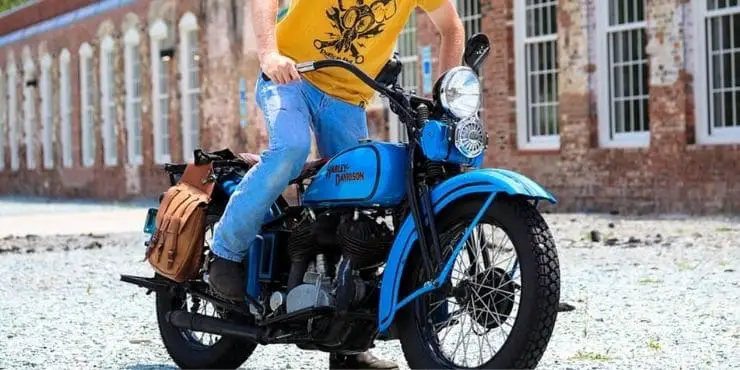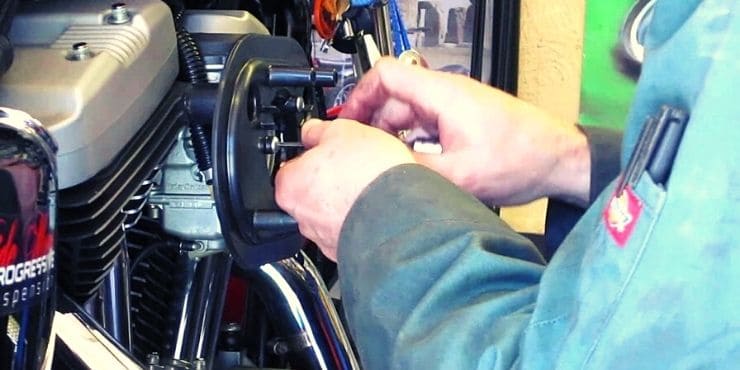Have you been having trouble adjusting the fuel injector in your Harley-Davidson? If so, all your qualms will be answered by the end of this article.
To adjust the idle on a fuel-injected Harley-Davidson, connect the bike to a Harley-Davidson Digital Technician or equivalent diagnostic tool. Modern fuel-injected models automatically control idle speed, so manual adjustments typically require recalibration through the bike’s ECU using specialized software.
But how does one do that? The answers will be in this article. Here, you’ll get to know why idle should be adjusted on fuel injected, how to know it should be adjusted, and how to adjust idle on fuel injected Harley-Davidson.
Why idle should be adjusted on fuel injected Harley’s?
The primary objective of making adjustments to the fuel injector is to enjoy the desired engine speed. Further, idling will also help your bike run efficiently. When you’re doing this, you’re establishing the right air and fuel mixture at idle. Moreover, you will be able to set a brilliant standard for future tuning.
You shouldn’t forget that a carburetor will supply your Harley-Davidson’s engine with fuel and air differently when idling as compared to wide-open throttle. Separate components and systems will be functional once you step on your Harley-Davidson’s gas pedal. Further, they’ll require dialing in.
Before getting into this, you will have to ensure that the idle control is in place. That’s the case because all the systems will work together and decide the behavior of your bike when parked/neutral.
How to adjust idle on fuel injected Harley-Davidson?
Harley-Davidson idle speed will refer to how fast your bike moves when releasing the brake with the engine running. If you have a fuel-injected Harley-Davidson, you’ll be able to adjust the idle speed using a little knob. This knob will be sticking out of the engine compartment towards the side of the bike.
Here is the step-by-step guide on how to adjust idle on fuel injected Harley-Davidson.
1. Know your Harley-Davidson’s RPM
- The appropriate idle speed for your Harley-Davidson model will be listed in the manual. Check the manual and find out the ideal RPM setting, which is usually around 700-1,000 RPM.
- Some bikes come with a tachometer, allowing you to easily monitor the RPM if the bike is running. You can easily use it for checking the idle speed before you determine if it’s already within the mentioned range.
- For Harley-Davidson models that don’t have a tachometer, this will be less important. You will then need to determine the RPM settings by using your ears and through touch. When in idle, the sound of the engine needs to be a low hum and not like a sharp throttle.
2. Locate the carburetor
- You’ll then have to locate the carburetor on your Harley-Davidson by checking the side of the engine. For a better idea of what a carburetor looks like, consult the owner’s manual of your Harley-Davidson. A carburetor is a large metal component that has a tube on top and a circular port towards the side.
- The carburetor location will vary from one Harley-Davidson model to the other. The carburetor’s primary job is to combine air and gas for making the fuel. It’ll regulate the idle speed via a small screw, which is called the idle screw. This screw will control the amount of gas entering the engine when it isn’t revving up.
3. Find the idle screw
- You should find the idle screw by checking near the bottom or under the float bowl for a spring. The float canister is essentially a small gas tank sitting at the bottom of the carburetor. You should look around for the float bowl for a screw that is attached to a 1 or 2-inch coil. This is what you call an idle screw. On some Harley-Davidson models, the coil will rest vertically against the carburetor whereas, on other models, the coil will sit horizontally, leading to the carburetor’s body.
- The screw will either be found on the left or right side of your Harley-Davidson. If you’re not able to find it, you should try to check it on the opposite side. On a few bikes, there will be a knob that sticks out of the side near the engine. You’ll need to turn this knob either clockwise or counterclockwise for adjusting the idle speed.
- The idle screw will feature a Phillips’ head. If you’re seeing a flat head screw nearby, this will be the air inlet screw. While the air inlet screw can easily be turned to adjust the idle speed, the screw will control airflow when driving. As a consequence, it isn’t a good idea to mess with the screw.
4. Remove anything blocking access to the idle screw
- Remove the edges that are blocking screw access if needed. If a piece of trim or panel is preventing you from adjusting the idle screw, you’ll have to remove a pair of the body from your Harley-Davidson. For doing so, you can use an Allen wrench or socket wrench. You will be able to remove the screws or bolts that hold the panel in place. After that, gently lift the panel off the bike.
5. Stabilize the engine
- Start your Harley-Davidson and wait for a while for the engine to level. Then, lower the kickstand and rev up your bike. Wait for a couple of minutes for the engine to warm up to a stable speed.
- If you’re doing it when it is below 40° F, allow the Harley-Davidson to run for 10-15 minutes. Bikes that have a cold setting restrict the idle speed until the engine warms up.
6. Adjust the idle screw
- Check the idle RPM on the tachometer, as long as you have one. If your bike comes with an RPM gauge, look at the meter when the bike is still idle. If the RPM is already in the idle range, you don’t have to change the idle setting with the idle screw. In case the RPM isn’t in the acceptable range, determine if you have to increase or decrease the idle speed.
- If your bike doesn’t have a tachometer, do it based on the engine’s sound and the feel when riding the bike. Generally, idling needs to sound like a thud. Your bike should be fast enough to stabilize without a foot on the ground once you’ve let go of it.
- Tighten the screw clockwise for increasing the idle speed. If the idle speed is too low, you should use a Phillips screwdriver for turning the idle screw clockwise. In case the coil is vertical, and the screw is present at the bottom, you should turn the screw counterclockwise if you’re looking at it from above. Moreover, turn the screw a couple of times for minor adjustments. For dramatically increasing idle RPM, do it 3-5 times.
- On certain Harley-Davidson bikes, you will be able to adjust the screw by hand. However, it is safer to do so using a screwdriver. On newer bikes, there will be a knob towards the side of the bike. If there is one, you’ll be able to turn the knob clockwise for tightening the screw.
7. Loosen the idle screw
- Loosen the screw counterclockwise for reducing the idle speed. You’ll have to rotate the bolt anticlockwise for decreasing the idle speed before pulling it back. Turn the bolt 3-5 times depending upon how drastically you’re looking to cut the idle speed of your Harley-Davidson.
- Inspect the tachometer after loosening the screw if you have a gauge. The needle will reflect the changes that have to make to the idle screw. Check for the tachometer after you’ve loosened the idle screw and see if the RPM is within the recommended range. If not, make other adjustments until the needle is placed properly when your bike is idle.

8. Get on your Harley-Davidson and see how it feels
Once you’ve adjusted the idle on your Harley-Davidson, get on it and release the brake, and notice how it feels. This will give you a clearer idea of whether or not the idle speed is appropriate. In case it feels too high or too low, make additional adjustments to change the speed.
Conclusion
Thank you for reading. Hopefully, now you have a clearer idea of how to adjust idle on fuel injected Harley-Davidson. Going through the step-by-step process will help you ensure that you never fail to adjust the idle on your bike. It’s all about finding out the idle screw and setting it properly to increase/decrease the idle speed.

